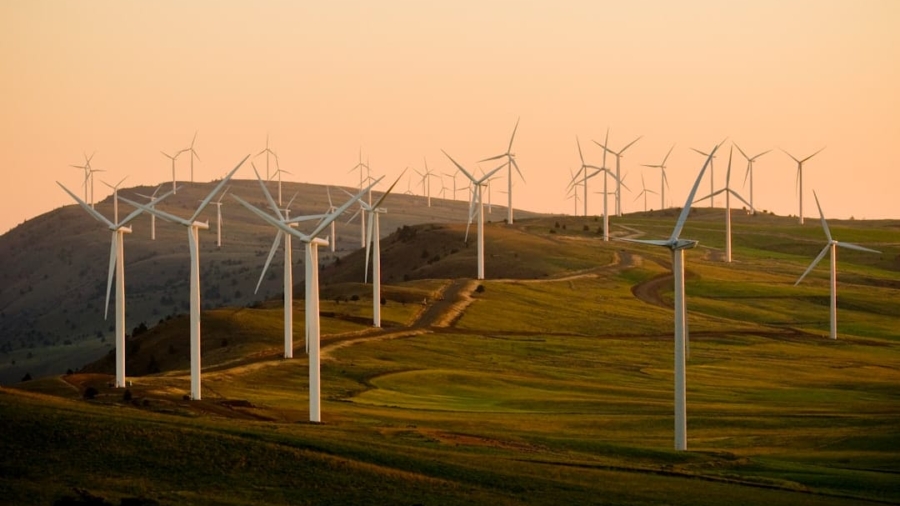The intersection of artificial intelligence (AI) and renewable energy represents a transformative frontier in the quest for sustainable power solutions. As the world grapples with the pressing challenges of climate change and the depletion of fossil fuels, the integration of AI technologies into renewable energy systems offers innovative pathways to enhance efficiency, optimize resource management, and reduce operational costs. AI encompasses a range of technologies, including machine learning, data analytics, and predictive modeling, which can be harnessed to improve the performance of renewable energy sources such as wind, solar, hydroelectric, and biomass.
The urgency for a transition to renewable energy sources is underscored by alarming statistics regarding global carbon emissions and the increasing frequency of climate-related disasters. According to the International Energy Agency (IEA), renewable energy sources accounted for nearly 30% of global electricity generation in 2020, a figure that is expected to rise significantly in the coming years. However, the intermittent nature of renewable energy sources poses challenges in terms of reliability and grid stability.
Here, AI emerges as a powerful ally, capable of analyzing vast datasets to predict energy production patterns, optimize energy storage solutions, and facilitate demand response strategies. By leveraging AI, stakeholders in the energy sector can make informed decisions that not only enhance operational efficiency but also contribute to a more sustainable energy future.
Key Takeaways
- AI has the potential to revolutionize the renewable energy sector by optimizing energy production, reducing costs, and improving efficiency.
- In wind energy, AI can be used to predict wind patterns, optimize turbine performance, and improve maintenance schedules.
- AI in solar energy can enhance the efficiency of solar panels, predict energy production, and optimize the placement of solar arrays.
- AI in hydroelectric energy can improve dam operations, predict water flow, and optimize energy production.
- AI in biomass energy can optimize the production process, improve fuel quality, and enhance energy output.
AI in Wind Energy
Wind energy has emerged as one of the most rapidly growing sources of renewable power worldwide. The deployment of AI technologies in this sector has revolutionized how wind farms are designed, operated, and maintained. One of the primary applications of AI in wind energy is predictive maintenance.
By utilizing machine learning algorithms to analyze data from sensors embedded in wind turbines, operators can identify potential mechanical failures before they occur. This proactive approach minimizes downtime and maintenance costs while maximizing energy output. For instance, GE Renewable Energy has implemented AI-driven predictive maintenance systems that have demonstrated a reduction in unplanned outages by up to 10%, significantly enhancing the reliability of wind farms.
Moreover, AI plays a crucial role in optimizing wind farm layouts and turbine placements. Traditional methods of site assessment often rely on historical weather data and expert judgment; however, AI can process real-time meteorological data and simulate various scenarios to determine the most effective configuration for maximizing energy capture. Companies like Siemens Gamesa have developed AI algorithms that analyze wind patterns, terrain features, and turbine performance metrics to optimize the arrangement of turbines within a wind farm.
This not only increases energy production but also reduces the environmental impact by minimizing land use.
AI in Solar Energy

The solar energy sector has also embraced AI technologies to enhance efficiency and reduce costs. One significant application is in solar panel performance optimization. By employing machine learning algorithms to analyze data from solar panels, operators can identify underperforming units and diagnose issues such as shading or dirt accumulation that may hinder energy production.
For example, companies like SunPower utilize AI-driven analytics platforms that monitor solar panel performance in real-time, enabling rapid identification and resolution of issues that could affect overall system efficiency. In addition to performance monitoring, AI is instrumental in solar energy forecasting. Accurate predictions of solar irradiance are essential for effective grid management and energy trading.
AI models can analyze historical weather data, satellite imagery, and atmospheric conditions to forecast solar energy generation with remarkable precision. A notable example is the work done by Google’s DeepMind, which has developed machine learning models that can predict solar power output up to 36 hours in advance with an accuracy rate exceeding 90%. This capability allows grid operators to better balance supply and demand, facilitating a smoother integration of solar energy into the existing power grid.
AI in Hydroelectric Energy
Hydroelectric power remains one of the oldest and most established forms of renewable energy. The integration of AI into hydroelectric systems has opened new avenues for optimizing water resource management and enhancing operational efficiency. One key application is in the optimization of reservoir operations.
AI algorithms can analyze hydrological data, weather forecasts, and historical water flow patterns to optimize water release schedules from reservoirs. This ensures that hydroelectric plants operate at peak efficiency while also meeting downstream water needs for agriculture and ecosystems. Furthermore, AI can enhance the monitoring and maintenance of hydroelectric infrastructure.
By employing advanced sensor technologies combined with machine learning algorithms, operators can detect anomalies in equipment performance or structural integrity. For instance, predictive analytics can be used to assess the condition of turbines and generators, allowing for timely maintenance interventions that prevent costly failures. The Tennessee Valley Authority (TVA) has implemented such AI-driven monitoring systems across its hydroelectric facilities, resulting in improved reliability and reduced operational costs.
AI in Biomass Energy
Biomass energy, derived from organic materials such as agricultural residues, wood chips, and waste products, presents unique challenges and opportunities for AI integration. One significant area where AI can make an impact is in feedstock optimization. The variability in biomass feedstock quality can affect the efficiency of conversion processes; thus, AI can be employed to analyze feedstock characteristics and optimize blending strategies.
By utilizing machine learning algorithms to assess factors such as moisture content, composition, and calorific value, operators can develop optimal feedstock mixtures that enhance energy output. Additionally, AI can facilitate the optimization of biomass conversion processes. Whether through anaerobic digestion or combustion, the conversion of biomass into usable energy requires precise control over various parameters such as temperature, pressure, and reaction time.
For example, researchers at the University of California have developed an AI-based control system for biomass gasification that has demonstrated significant improvements in conversion efficiency compared to traditional methods.
Challenges and Limitations of AI in Renewable Energy

Despite the promising applications of AI in renewable energy sectors, several challenges and limitations must be addressed to fully realize its potential. One significant hurdle is the availability and quality of data. Effective AI models rely on large datasets for training; however, many renewable energy systems lack comprehensive historical data due to their relatively recent deployment or inconsistent monitoring practices.
Inaccurate or incomplete data can lead to suboptimal model performance and unreliable predictions. Another challenge lies in the integration of AI technologies into existing infrastructure. Many renewable energy systems were designed without considering advanced digital technologies; thus, retrofitting these systems with AI capabilities can be complex and costly.
Additionally, there may be resistance from stakeholders who are hesitant to adopt new technologies due to concerns about reliability or a lack of understanding regarding their benefits. Overcoming these barriers requires not only technological advancements but also effective communication strategies to educate stakeholders about the advantages of integrating AI into renewable energy systems.
Future Developments in AI for Renewable Energy
The future of AI in renewable energy holds immense promise as advancements in technology continue to evolve. One area poised for growth is the development of more sophisticated machine learning algorithms capable of processing diverse datasets from various sources. As IoT devices become increasingly prevalent in renewable energy systems—providing real-time data on performance metrics—AI will be able to leverage this information for more accurate predictions and optimizations.
Moreover, the integration of blockchain technology with AI could revolutionize how renewable energy is traded and managed. Blockchain’s decentralized nature allows for transparent tracking of energy production and consumption, while AI can facilitate smart contracts that automate transactions based on real-time data inputs. This synergy could lead to more efficient energy markets where consumers can buy and sell excess renewable energy seamlessly.
Additionally, as climate change continues to drive policy changes globally, there will likely be increased investment in research and development focused on harnessing AI for renewable energy applications. Governments and private entities are recognizing the importance of sustainable practices; thus, funding initiatives aimed at exploring innovative uses of AI will likely expand.
The Impact of AI on Renewable Energy
The integration of artificial intelligence into renewable energy systems is not merely a trend; it represents a fundamental shift towards more efficient and sustainable power generation practices. From optimizing wind turbine performance to enhancing solar forecasting capabilities, AI is proving to be an invaluable tool across various sectors within renewable energy. As technology continues to advance and new applications emerge, the potential for AI to drive innovation in this field will only grow stronger.
The impact of AI on renewable energy extends beyond operational efficiencies; it also plays a crucial role in addressing global challenges related to climate change and resource management. By enabling smarter decision-making processes and facilitating better integration of renewable sources into existing grids, AI contributes significantly to creating a more resilient and sustainable energy landscape for future generations. As we move forward into an era defined by technological advancements and environmental consciousness, the collaboration between AI and renewable energy will undoubtedly shape the trajectory of our global energy systems.
A related article that delves into the broader technological trends shaping 2023 can be found here. This article provides insights into how AI, among other technologies, is expected to influence various industries, including renewable energy, by enhancing predictive maintenance, improving grid management, and increasing the overall efficiency of energy systems. Understanding these trends is essential for stakeholders looking to leverage AI in the renewable energy sector effectively.
FAQs
What is AI optimization in renewable energy production?
AI optimization in renewable energy production refers to the use of artificial intelligence (AI) technology to improve the efficiency and effectiveness of renewable energy generation. This can include optimizing the operation of renewable energy systems, predicting energy production, and identifying opportunities for improvement.
How does AI optimize renewable energy production?
AI can optimize renewable energy production by analyzing large amounts of data from renewable energy systems, weather patterns, and energy demand. This analysis can help identify patterns and trends that can be used to improve the operation of renewable energy systems, such as adjusting the angle of solar panels or the pitch of wind turbine blades to maximize energy production.
What are the benefits of using AI to optimize renewable energy production?
The benefits of using AI to optimize renewable energy production include increased energy efficiency, reduced operating costs, and improved reliability of renewable energy systems. AI can also help integrate renewable energy sources into the grid more effectively, leading to a more stable and sustainable energy supply.
Are there any challenges in using AI to optimize renewable energy production?
Challenges in using AI to optimize renewable energy production include the need for accurate and reliable data, as well as the complexity of integrating AI systems with existing renewable energy infrastructure. Additionally, there may be concerns about the potential impact of AI on jobs in the renewable energy sector.
What are some examples of AI optimization in renewable energy production?
Examples of AI optimization in renewable energy production include using AI algorithms to predict solar and wind energy production, optimizing the operation of energy storage systems, and using AI-powered drones to inspect and maintain renewable energy infrastructure. AI can also be used to optimize the design and placement of renewable energy systems for maximum efficiency.

